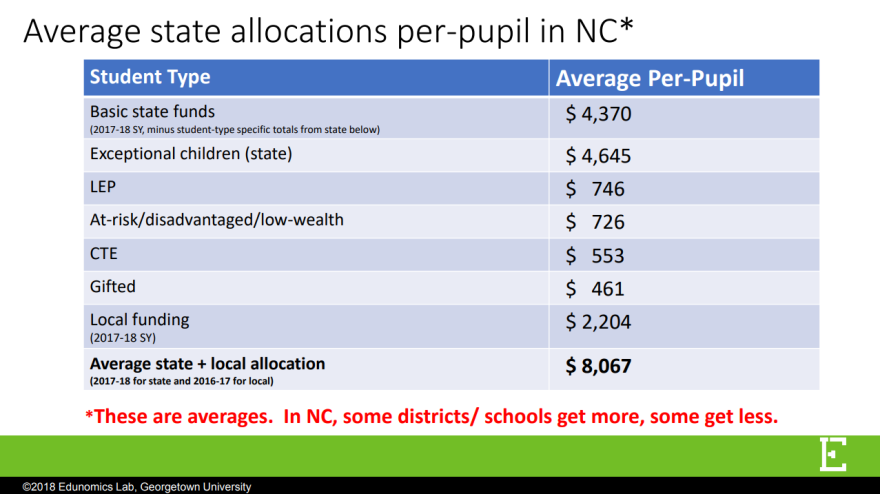A legislative committee that may overhaul the way schools are funded is looking to rewrite the formula so it’s based primarily on a school district’s students.The joint legislative committee on Education Finance Reform was formed to help the state develop a weighted student funding model -- which most states now use.
Education researcher Marguerite Roza of Georgetown University gave the final expert presentation of the committee's study phase. Roza spoke about various funding models and how states transitioned between them.
“That seemingly innocuous formula matters,” Roza said. “It doesn’t just matter because some schools get more money than others. It matters because it signals who’s making decisions in education.”
Roza said a model that pays per student and their needs gives school leaders more choice in spending, to rely on their expertise.
“How do we tap into that information they have about what's working and what's not in their buildings?” Roza asked. “We can't do that unless generate the flexibility and the equity down at that school level.”
Roza called North Carolina's school funding model outdated.
The state’s current model is a complex system of allotments for teachers, programs and school characteristics. The formula allots a certain number of teacher positions based on the number of students enrolled, and those allotments pay per teacher no matter the salary. That means schools that retain experienced teachers receive more funding.

Roza explained that other states that transitioned to a student-based funding model took their average per-pupil funding for categories of students and made those the basis for an overall per-pupil formula. California made the transition in 2013, and Roza said school districts there now show a stronger relationship between school funding and student outcomes.
Committee co-chairman Craig Horn said the committee will meet again after the upcoming short session ends to "put pen to paper" and draft legislation in time for the long session in the fall.










